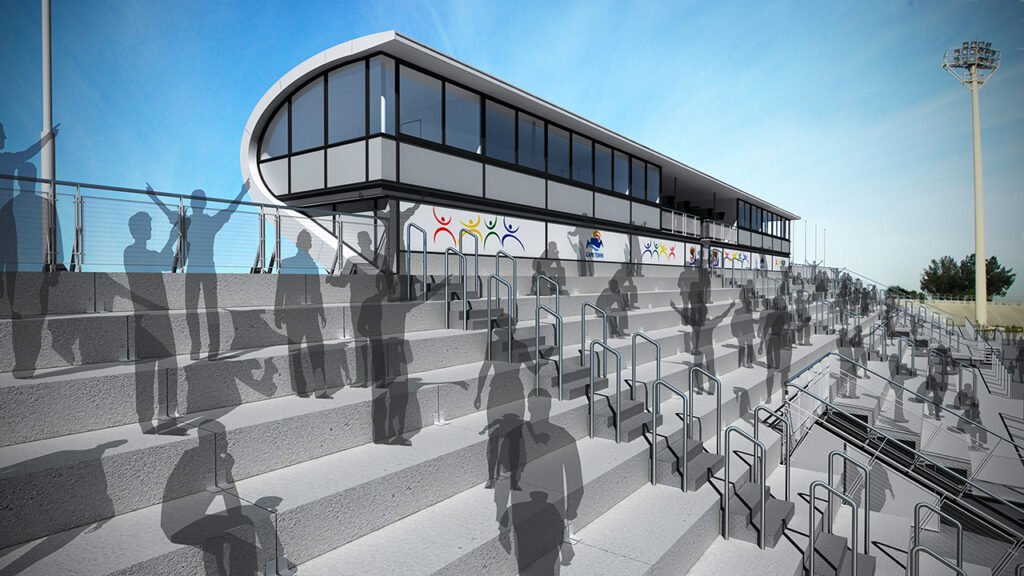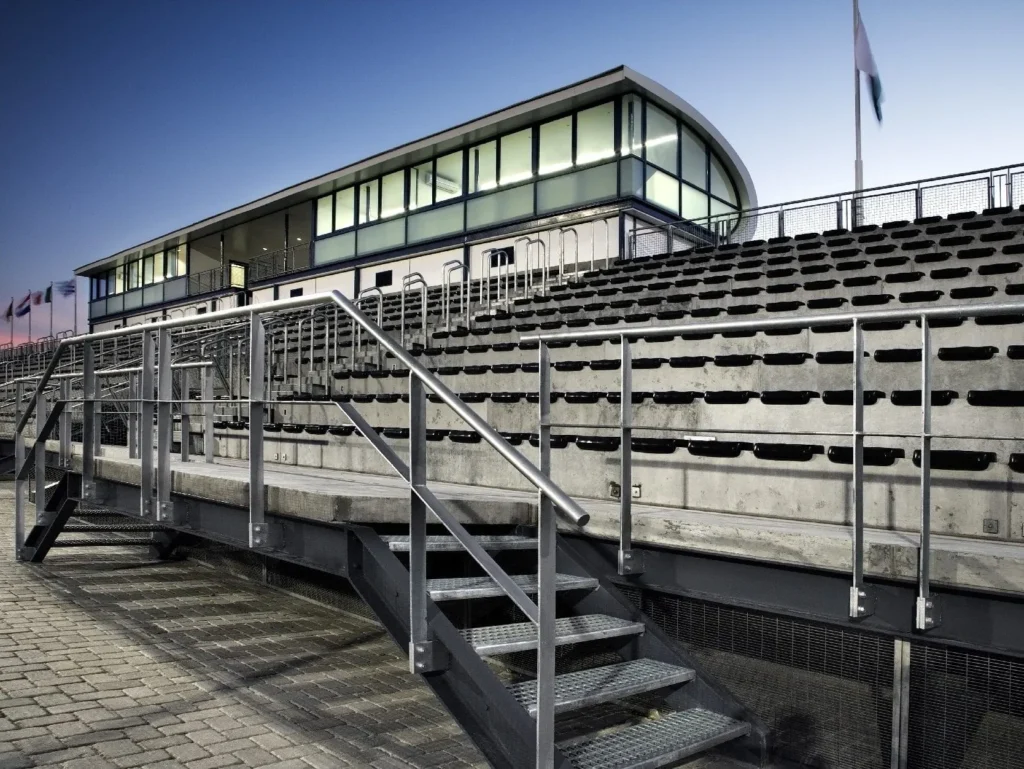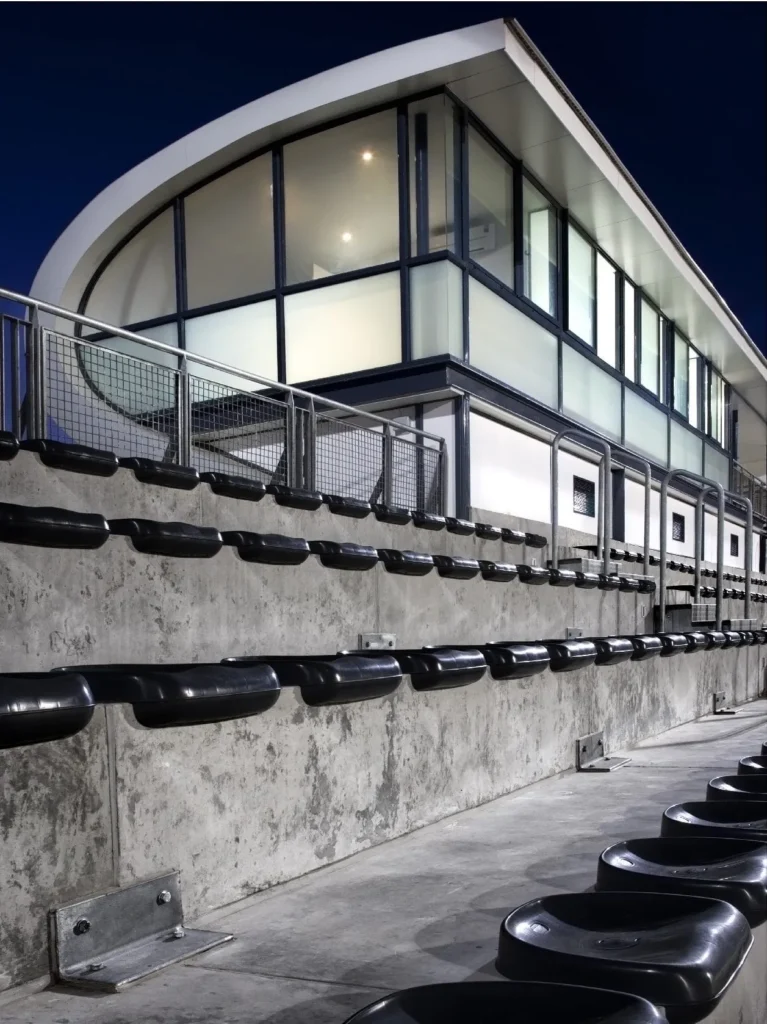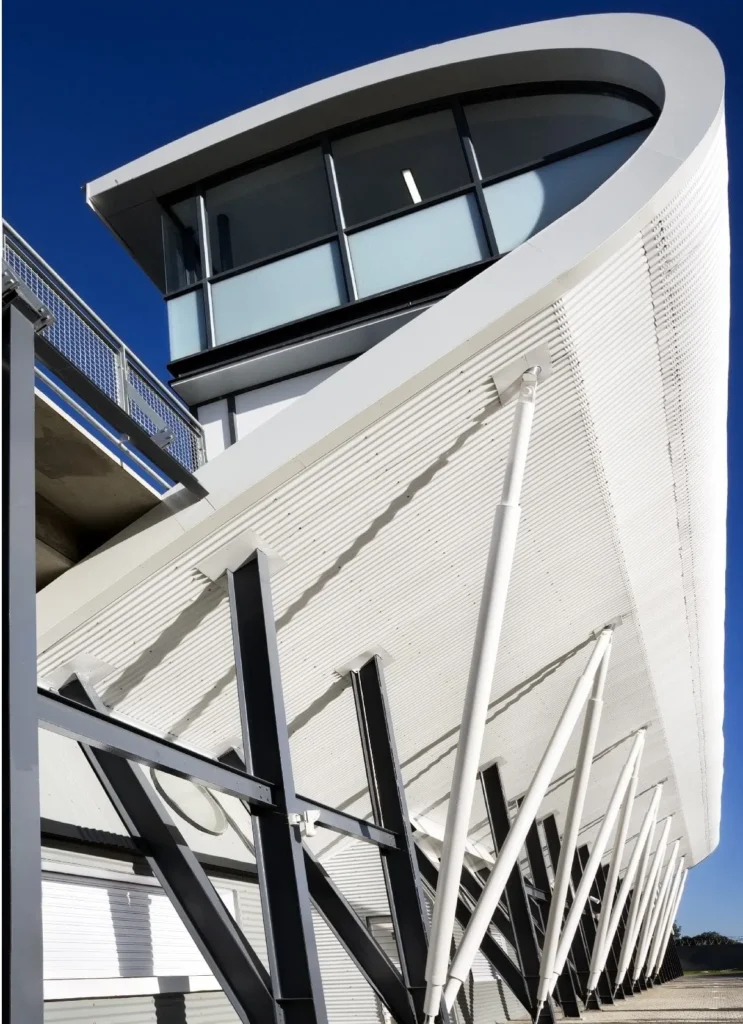A Lasting Legacy for Cape Town
For the 2010 FIFA World Cup in South Africa, Philippi Stadium was chosen as one of two key training sites in the Cape Town area. In collaboration with Designscape, we developed the concept design for the grandstand extension, focusing on creating a facility that would meet the needs of the World Cup while continuing to serve the local community long after the event. The upgrade was also part of the 2009 Confederations Cup preparations, strongly emphasising leaving a lasting legacy for football development in South Africa.
The design extended the stadium’s seating capacity by 1,500 seats. It reconfigured the existing structure to incorporate essential facilities such as storage areas, concession kiosks, toilets, changing rooms, meeting rooms, commentary boxes, and a media gallery. These additions transformed the stadium into a multi-use space, serving as a training venue and a fan park where the community could gather to watch the games.
A key feature of the project was the creation of a sleek, curved viewing gallery. By extending the existing structure lines, we designed a lightweight structure that housed the media accommodation at the top of the stands, adding symmetry and balance to the overall form. This contemporary addition was clipped to the rear of the building and propped back to the stands below, ensuring structural stability without requiring extensive groundwork. Prefabrication allowed us to streamline the construction process, with some elements completed on-site to a unified grid.
This modular approach enabled rapid construction, crucial to meeting the tight deadlines ahead of the World Cup. Prefabricated elements offered a cost-effective solution, keeping the project on time and within budget. The design also ensured that the stadium could evolve to meet future demands.
Working with Designscape was a rewarding experience. We led the concept design and contributed our expertise in stadia design, while Designscape was the executive architect, delivering the project on-site. The final result met FIFA’s specifications and left a venue that continues to serve the South African Football Association (SAFA), the Premier Soccer League (PSL), and the local community.
This project highlights how thoughtful design and collaboration can create spaces that leave a lasting legacy, benefiting sports infrastructure and the surrounding community for years to come.








